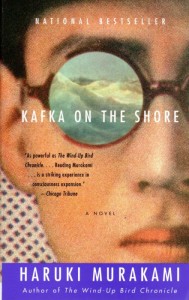“The good thing about writing books is that you can dream while you are awake,” Japanese author Haruki Murakami once said.
Murakami’s books, often featuring a dream-like blend of realism and surrealism, have sold millions of copies worldwide and made Murakami a literary superstar in his native Japan.
But the literary life came as a surprise to Murakami.
Growing up in Japan in the ’60s, he felt stifled by the culture of the post-war era. Instead of reading the Japanese literature of his father (who was a lit teacher), he listened to jazz and read western fiction, falling in love with J.D. Salinger, Kurt Vonnegut, Franz Kafka, and American detective fiction.
Murakami’s distinctive style shows the influence of this cultural fusion: with uncanny skill he blends a highly realistic style with elements of the surreal and the absurd, and he mixes genres such as hard-boiled detective fiction with Shakespearean romance.
In Kafka on the Shore, an old man who can talk to cats sets off to find a mysterious stone that he knows nothing about, and a young runaway boy lives in a library and falls in love with a ghost. But the symbolic elements are carefully chosen so that they fit alongside the characters without a bump. They are the innermost hopes and desires of the characters, and their presence in the world of the novel only enhances the reader’s empathy with the characters and their struggles.
Murakami adds surrealistic elements to more closely mimic the tangled reality we experience in our daily lives. “I always hope to position myself away from so-called conclusions,” he once said. “I would like to leave everything wide open to all the possibilities in the world.”
Haruki Murakami must-read: Kafka on the Shore
(Lansdowne library code: PL 856 U673 K33)

